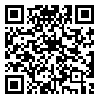BibTeX | RIS | EndNote | Medlars | ProCite | Reference Manager | RefWorks
Send citation to:
URL: http://jmums.mazums.ac.ir/article-1-7353-en.html
Double-J (DJ) stent is placed temporarily in the ureter after urology surgery and is removed after 2-6 weeks. It is relatively rare for a patient to forget about the indwelling DJ ureteral stent. Major complications associated with such situation include DJ fracture, infection and encrustation. Increasing the thickness of the stent causes the adhesion of the urinary tract, therefore, the stent cannot be easily removed. This article reports a 75-years-old male patient with fever and anuria. Serum creatinine concentration was 4 mg/dL. Ultrasonography of the left kidney showed multiple stones and the right kidney was found to be smaller than normal size. Changes in parenchymal echo suggested a possible dysfunction of the right kidney. Ultrasound of the Kidneys, Ureters and Bladder (KUB) showed a ureteral stent in the left kidney which was placed after transurethral uretero-lithotomy (TUL) ten years ago. The patient also had a history of another forgotten DJ for 6 years. Due to the patient's age and general condition, we decided to use spinal anesthesia and removed the forgotten stent in three stages using ureteroscopy. After three months the creatinine level was 1.5 mg/dL and the patient was in good condition. Patients with history of forgotten DJ should be adequately trained so that further complications are avoided. In treatment of such patients ureteroscopy is believed to be better for removing the forgotten DJ because of dilatation ureter which makes large stone fragments to be removed easier.
| Rights and permissions | |
 |
This work is licensed under a Creative Commons Attribution-NonCommercial 4.0 International License. |






